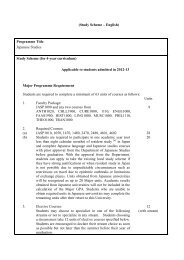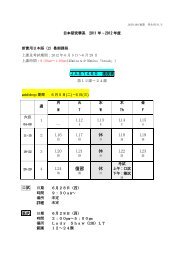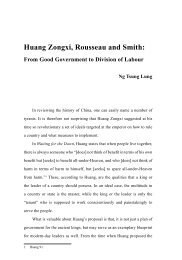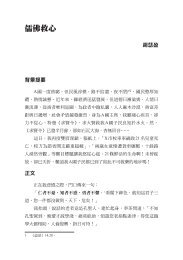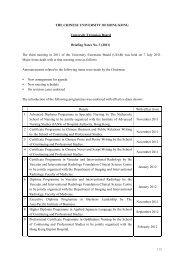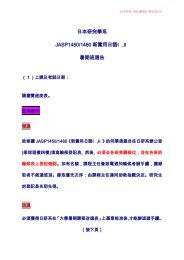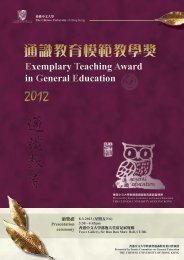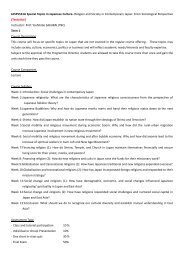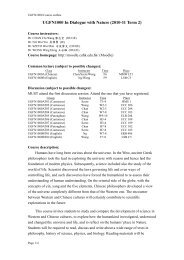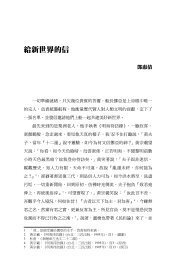ä¸è¼å ¨æ¸ - The Chinese University of Hong Kong
ä¸è¼å ¨æ¸ - The Chinese University of Hong Kong
ä¸è¼å ¨æ¸ - The Chinese University of Hong Kong
You also want an ePaper? Increase the reach of your titles
YUMPU automatically turns print PDFs into web optimized ePapers that Google loves.
26 Special Topic: Assessment in <strong>University</strong> General Education Program<br />
(impression <strong>of</strong> overall performance), depending upon the type <strong>of</strong> information<br />
being sought through the assessment (Gronlund & Brookhart, 2009).<br />
<strong>The</strong> highest validity for such instruments occurs when peers, supervisors,<br />
or employers are asked to rate students’ overt, observable behaviors rather<br />
than the students’ attitudes or motivations (Gronlund & Brookhart, 2009).<br />
For example, it would be better to include items on a checklist or rating scale<br />
such as “Student maintains consistent work hours” and “Student completes<br />
assigned tasks within specified time limits” rather than asking others to rate<br />
students’ attitudes using items such as, “Student shows pr<strong>of</strong>essionalism” or<br />
“Student values a strong work ethic.” It is likely that assessment devices<br />
already exist for many courses involving peer group projects, internships,<br />
or co-op employment. With careful attention to the affective ILOs, slight<br />
modifications <strong>of</strong> those assessment devices could yield useful data to evaluate<br />
the achievement <strong>of</strong> affective learning outcomes from informants other than<br />
the students themselves.<br />
Program-level Assessment <strong>of</strong> Affective Learning Outcomes<br />
Institutions must carefully consider the process and timing <strong>of</strong> measuring<br />
affective learning outcomes. Some outcomes are expected to occur gradually<br />
over time, as the result <strong>of</strong> the cumulative experiences <strong>of</strong> students over multiple<br />
classes, rather than being mastered within the context <strong>of</strong> a single, semesterlong<br />
course (e.g., “Students will value life-long learning” or “Students<br />
will develop sensitivity to the common concerns <strong>of</strong> human existence”).<br />
Particularly in the case <strong>of</strong> attitudinal change, where change is <strong>of</strong>ten subtle, it<br />
may be important to consider program-level assessment <strong>of</strong> affective learning<br />
outcomes rather than focusing exclusively on course-level assessment <strong>of</strong><br />
those learning outcomes.



